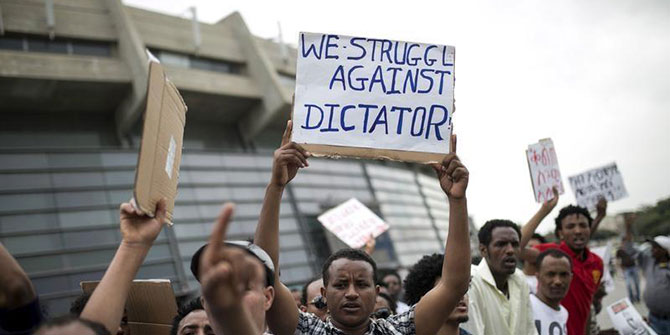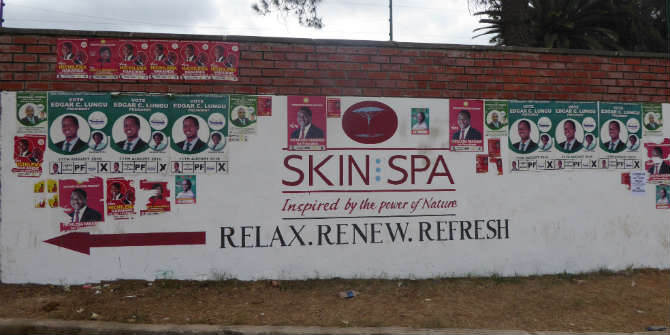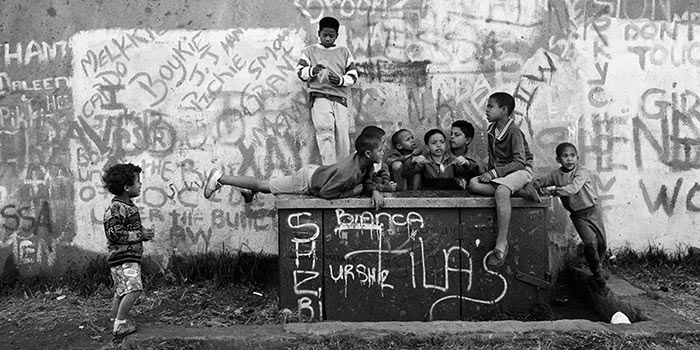The first book to provide a comprehensive overview and analysis of African peace operations, The Future of African Peace Operations: From Janjaweed to Boko Haram is a timely contribution particularly for those already familiar with the larger history of African peacekeeping, says Richard Stupart.
A collection of chapters by eleven different authors and edited by senior researchers in the field of African peacekeeping, this book provides a comprehensive overview of the challenges in creating a continent-wide peacekeeping architecture. Focused on the development of the African Union’s African Standby Force (ASF) and the African Capacity for Immediate Response to Crises (ACIRC), this book reflects on the work done to date to produce a coordinated African peacekeeping response, while pointing to ongoing political and organisational challenges. With ongoing challenges to peace and security remaining in contexts as diverse as the Boko Haram insurgency in Nigeria, to AMISOM’s attempts at stabilisation in Somalia and the ongoing fragility of Burundi and South Sudan, this book is a timely contribution to the work of formalising responses to these current and future concerns.
 The Future of African Peace Operations is divided into a number of thematic chapters, each dealing with specific questions and debates arising from attempts to develop both the ASF and ACIRC. Michelle Ndiaye, for example, examines the relationships between regional economic and political entities and the African Union, and their implications for an effective, continent-wide rapid response capacity. Walter Lotze looks at the difficulty of ensuring supplies and logistics for potential standby forces, considering whether alternative models of supply management – including just-in-time contracting – might not be more appropriate to rapid-response planning. Other authors, including Yvonne Akpasom, Kwesi Aning and Mustapha Abdallah, discuss ongoing questions as to the extent to which peacekeeping/peace enforcement operations have yet to develop into multidimensional operations that include civilian and police components.
The Future of African Peace Operations is divided into a number of thematic chapters, each dealing with specific questions and debates arising from attempts to develop both the ASF and ACIRC. Michelle Ndiaye, for example, examines the relationships between regional economic and political entities and the African Union, and their implications for an effective, continent-wide rapid response capacity. Walter Lotze looks at the difficulty of ensuring supplies and logistics for potential standby forces, considering whether alternative models of supply management – including just-in-time contracting – might not be more appropriate to rapid-response planning. Other authors, including Yvonne Akpasom, Kwesi Aning and Mustapha Abdallah, discuss ongoing questions as to the extent to which peacekeeping/peace enforcement operations have yet to develop into multidimensional operations that include civilian and police components.
The book makes clear that while the African Union has made a great deal of progress towards making forces from different nations able to cooperate technically and strategically, many political challenges to establishing a genuine standby force remain. De Conig, in his conclusion, goes so far as to question whether this will likely ever be possible, and whether a just-in-time readiness model might not be more logistically appropriate and politically feasible in most instances. Taken together, the various authors provide a comprehensive overview of the technical and policy challenges – both overcome and remaining – in the ASF and ACIRC concepts, which will be of particular interest to outsiders interested in understanding the histories of these initiatives. Equally, the authors provide a great deal of specific policy advice on how many of these issues are being dealt with, or could potentially be addressed in light of the types of peace operations to which African forces have found themselves deploying.

Photo Credit: UN Photo via Flickr (http://bit.ly/29Vo6cF) CC BY-NC-ND 2.0
For non-technical readers outside of the field of African peace operations, some chapters in The Future of African Peace Operations may be tough reading, and it would be useful to have a background understanding of many of the key operations (such as AMISOM, MINUSMA, UNAMID, etc) discussed, as this is largely assumed of the reader. Nevertheless, for a core audience already familiar with the larger history of African peace operations and looking for more detailed analysis of the organisational and policy thinking over the years of the ASF/ACIRC projects, this book shines as a reference.
The Future of African Peace Operations: From the Janjaweed to Boko Haram. Cedric H. de Coning, John Karlsrud, Linnéa Gelot Eds. Zed Books. 2016.
Richard Stupart is the Features Editor of African Defence Review and holds an MPP (Conflict Studies) and MA Media Studies (Media and Famine). His primary research interests are media representation and humanitarian response, empathy and duty to distant suffering, and mixed research methods. Richard’s work has included reporting on post conflict recovery in northern Uganda, critiques of humanitarian response, and research periods in South Sudan and the eastern Democratic Republic of Congo. He blogs at Where the Road Goes. Follow Richard on Twitter @wheretheroad.
The views expressed in this post are those of the authors and in no way reflect those of the Africa at LSE blog or the London School of Economics and Political Science.





